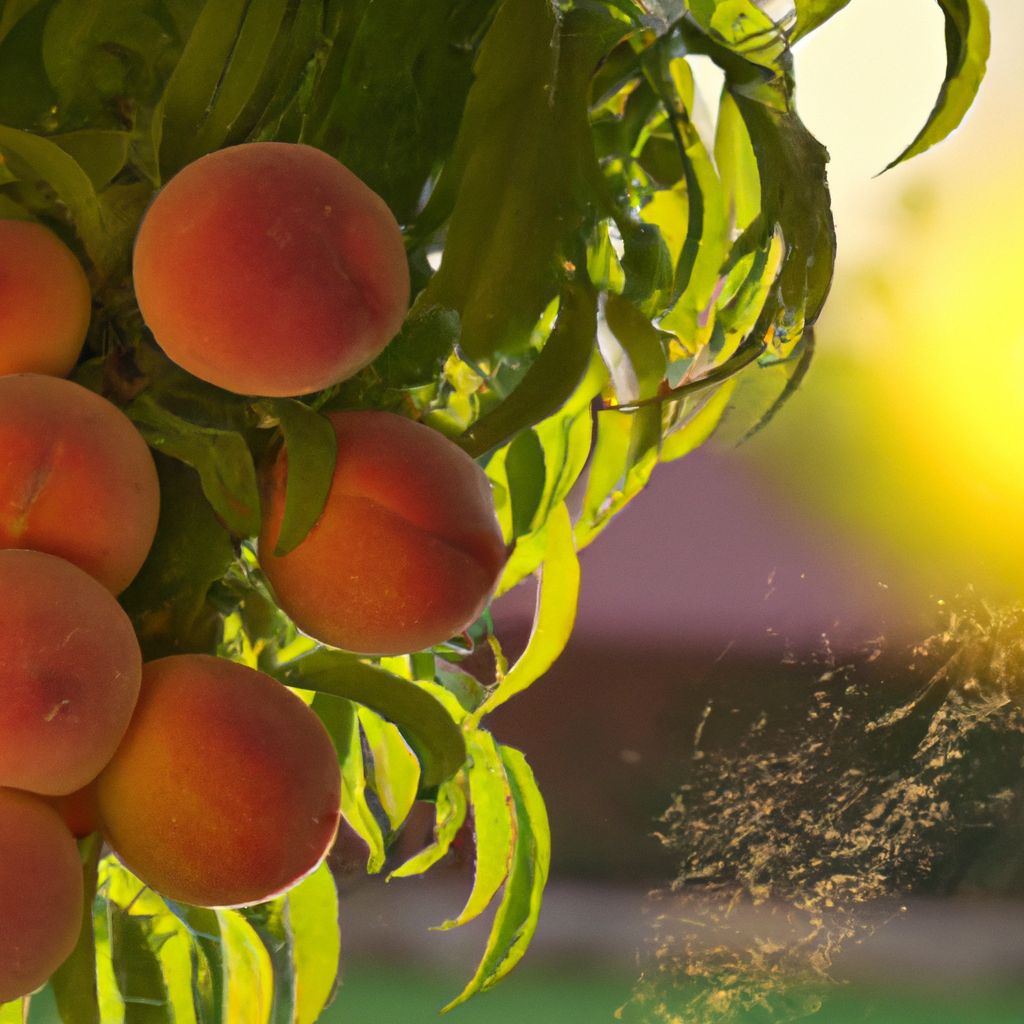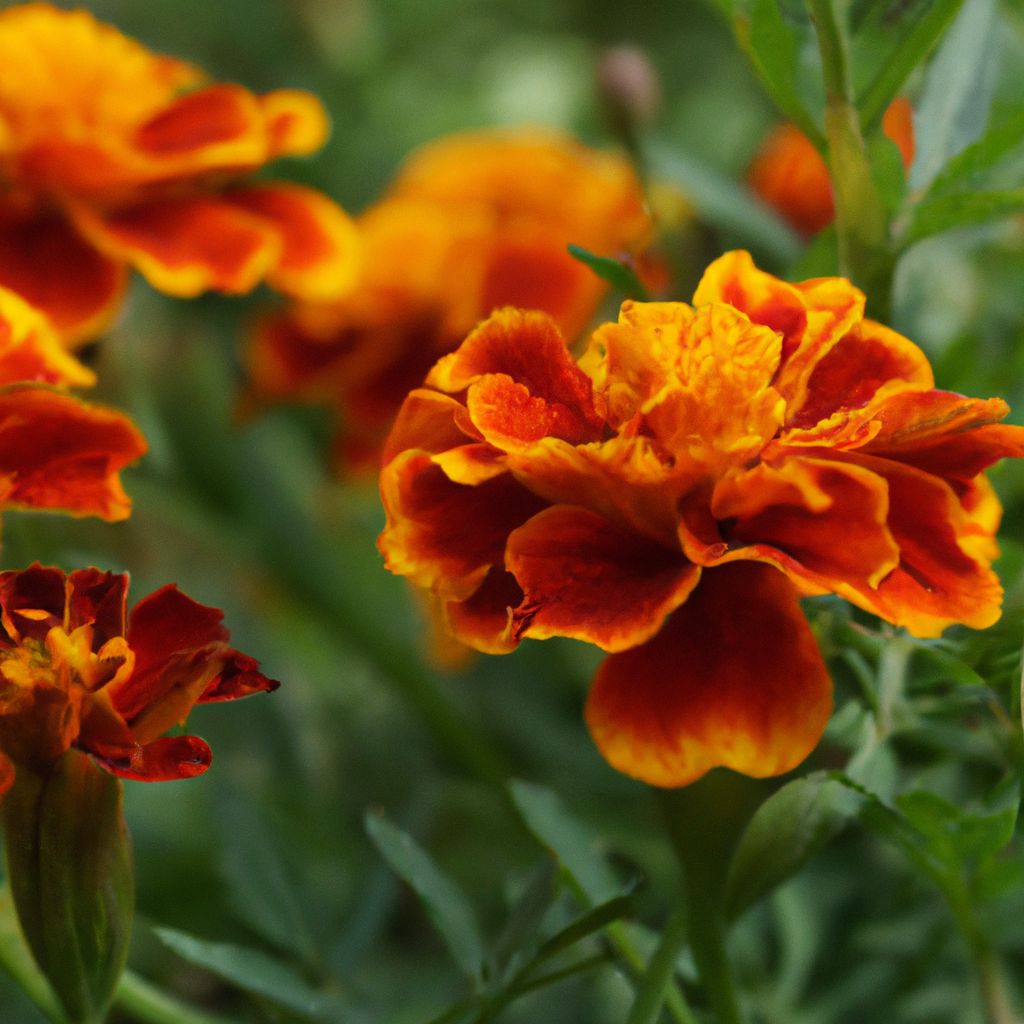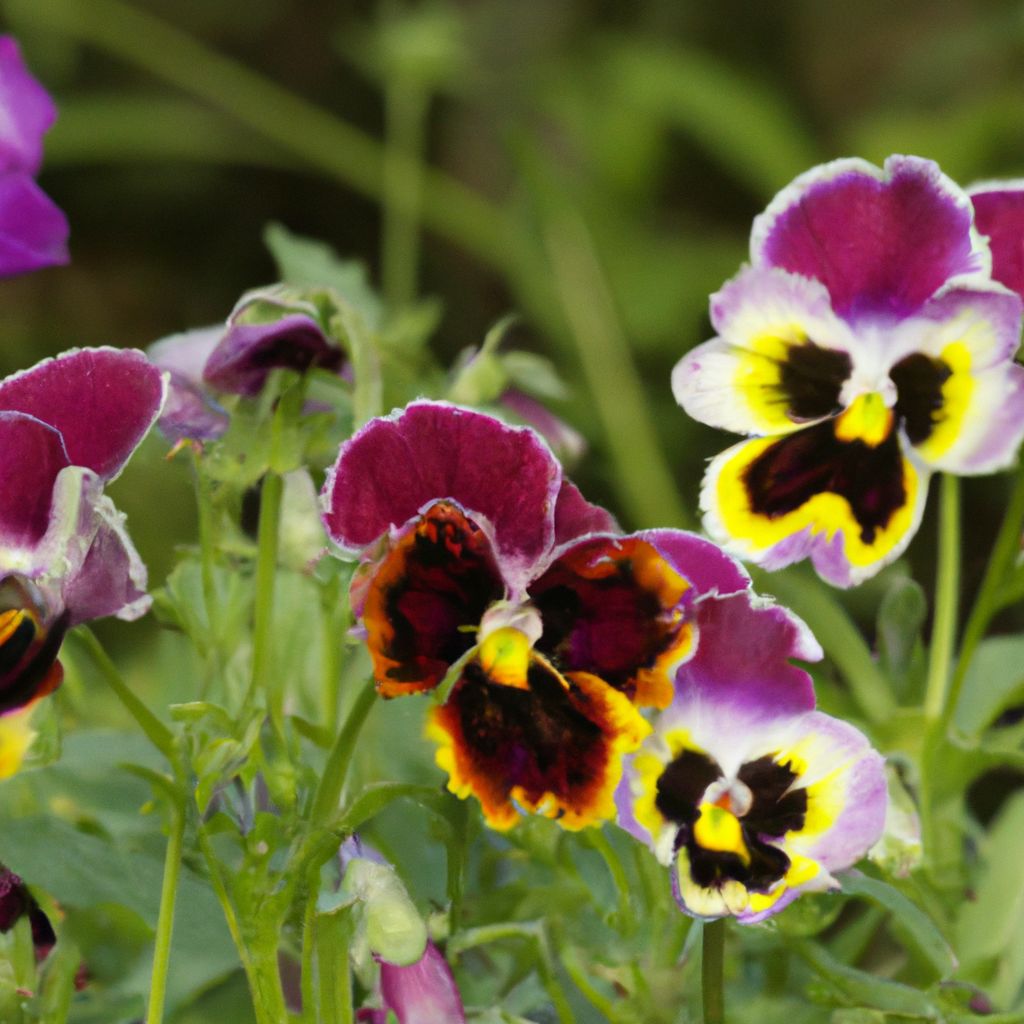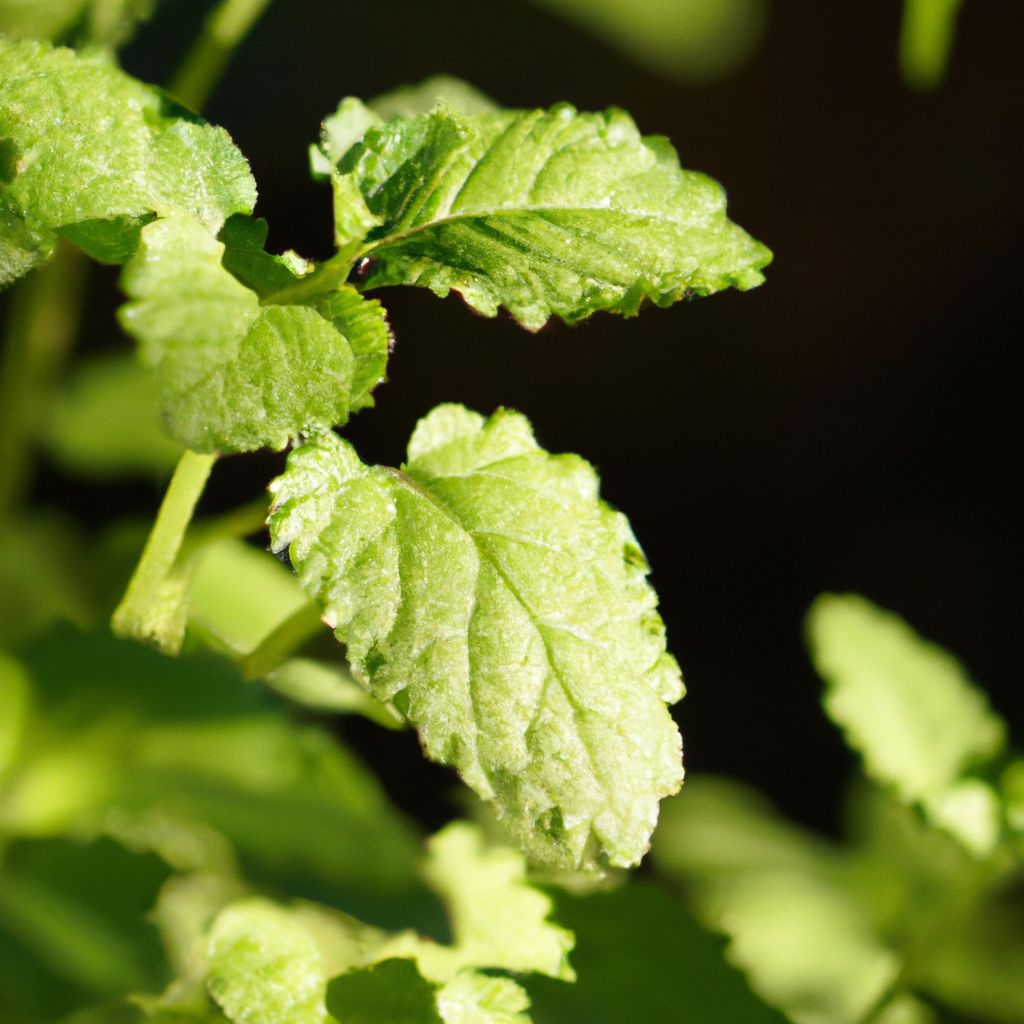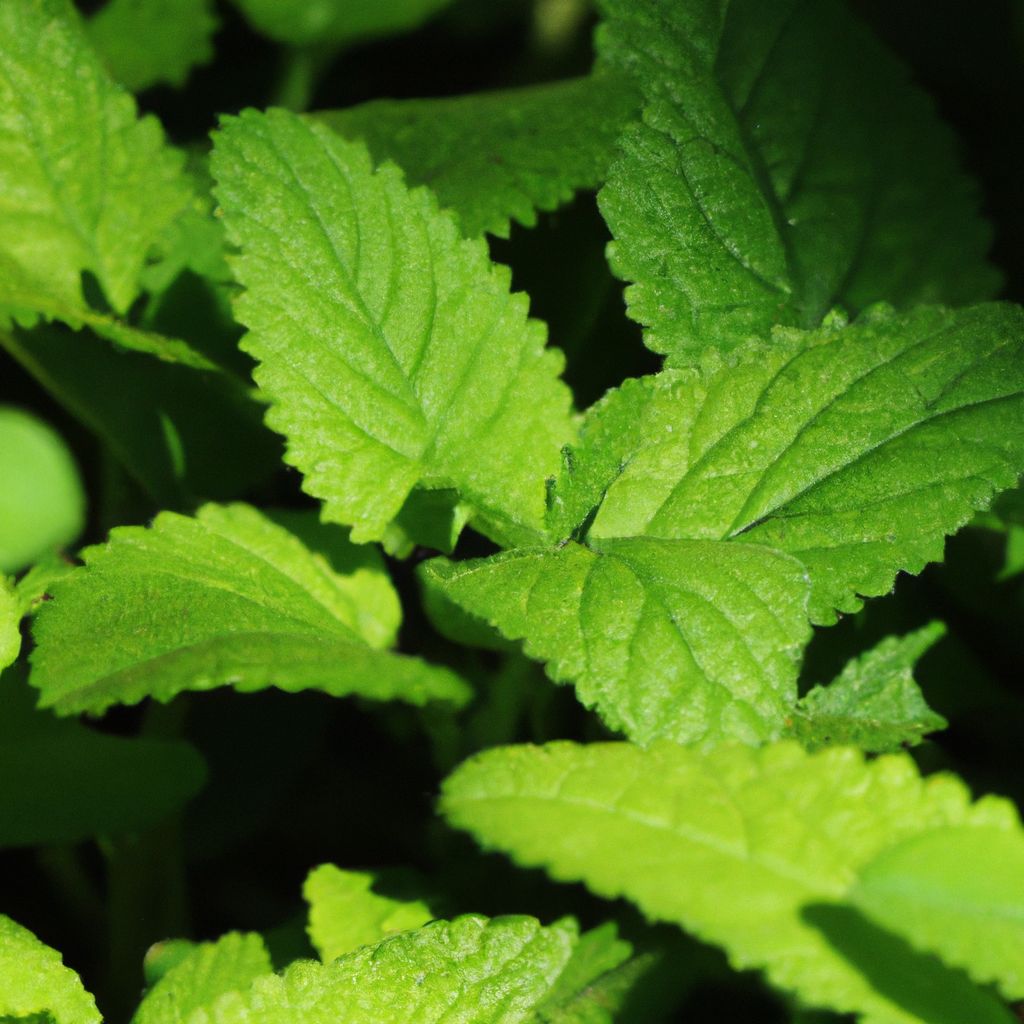For backyard gardeners, few endeavors prove more rewarding than growing your own peach trees. From watching delicate blossoms unfurl in spring to plucking sun-ripened, perfumed fruit straight from the orchard in summer, peach cultivation connects you profoundly with nature’s seasonal rhythms and bounty.
Beyond the anticipation of the harvest, peach trees impart beauty and provide a focal point for landscaping designs year-round. Clusters of pink flowers signify winter’s end as they blanket branches in spring. Glossy green leaves clothe expanding boughs through summer before donning sensational shades of crimson and gold for fall’s colorful display. The visual interest meshes perfectly with the promise of fruit nested among vibrant foliage.
Additionally, succeeding with peach cultivation brings immense satisfaction and pride. Nurturing a tree from dormant bareness to abundant production involves attentive care across seasons. Your stewardship is rewarded with basket after basket overflowing with sweet, juicy rewards. Tending an orchard fosters an enriching connection with the land and a deep awareness of nature’s glory.
Of course, without proper planning and care, peach trees will fail to thrive. They have particular needs in terms of chill hours, climate suitability, pruning practices, pest prevention, and more. Thankfully, with appropriate variety selection for your region and a commitment to providing well-drained soil, ample sunlight, responsible watering, and diligent upkeep, anyone can create an orchard oasis right in their backyard.

The Joys of Peach Cultivation
Growing peaches can be a remarkably rewarding endeavor. Not only do you get to indulge in mouthwatering harvests, but you also gain a profound sense of accomplishment from nurturing your trees. Additionally, connecting with nature’s cycles through peach cultivation can be a beautiful experience.
Some of the top reasons peach cultivation is so worthwhile include:
- Abundant Harvests: With proper care, peach trees produce prolific amounts of fruit, providing basket after basket of juicy goodness.
- Unmatched Flavor: Nothing compares to the sweet aroma and burst of flavor from a fresh, ripe peach straight from your backyard tree.
- Sense of Achievement: Seeing your orchard transform from dormant trees in winter to abundant fruit in summer gives immense pride and satisfaction.
- Connecting with Nature: Being attuned to the changing seasons and growth cycles of your peach trees fosters appreciation for the natural world.
Achieving success with peach trees does require some effort. Proper planning and care are essential to keep your trees healthy and productive. However, the sweet payoff of abundant, fresh peaches makes it all worthwhile. This guide shares expert tips to help you cultivate thriving trees and relish the fruits of your labor.
Selecting the Best Peach Varieties
Choosing suitable peach varieties for your climate is the first step to success. Consider the following types to determine what best suits your specific needs:
Dwarf Varieties for Small Spaces
For backyard orchards with limited space, dwarf peach trees are the perfect pick. Compared to standard trees, dwarf varieties:
- Grow to just 6-8 feet tall
- Have a smaller spread of 4-6 feet
- Produce comparable amounts of full-sized fruit
- Are ideal for planting in containers
With their compact size and productivity, dwarf trees allow you to enjoy homegrown peaches even in the smallest yards or on apartment balconies.
When selecting a dwarf variety, pay attention to attributes like chill hours, ripening times, disease resistance, and fruit freestone/clingstone nature. Reliance, Bonanza, and Honey Babe are excellent choices.
Cold-Hardy Varieties for Chillier Climates
Gardeners in colder northern climates can still succeed with peach trees by using cold-hardy varieties adapted to withstand frigid winter temperatures. Look for cultivars with extreme cold tolerance ratings down to -20°F or lower.
Some top-rated cold-hardy peach options include:
- Reliance: Withstands temperatures reaching -20°F. Produces medium-sized, yellow freestone fruit.
- Contender: Extremely winter hardy to -30°F. Bears large, firm, yellow freestone peaches. Great for eating fresh or canning.
- Madison: Moderate chill hours variety rated for -20°F cold tolerance. Flavorful, juicy yellow peaches perfect for freezing.
Check with local nurseries to find even more specially-bred cold-climate selections. The right chilled-out varieties ensure you can have peachy harvests even in frosty regions.
Self-Pollinating Varieties for Easy Care
For simplified orchard management, self-pollinating peach varieties eliminate the need to plant different cultivars for cross-pollination. As the name suggests, self-pollinating peach trees can set abundant fruit with their own pollen.
Major perks of self-pollinating peach trees include:
- Reliable yearly harvests even with one variety
- Less time and work spent on pollination coordination
- Maximized fruit production in smaller spaces
- Greater flowering synchronization for guaranteed pollination
Florida King, Redhaven, and Sweet September are top-notch self-fruitful options. Monitor your local climate suitability for each variety before deciding what to plant.
With self-pollinating varieties, peach perfection is easier than ever to achieve even for beginner gardeners.

Providing Optimal Growing Conditions
In addition to choosing suitable varieties, providing ideal growing conditions gives your peach trees the best chance of staying vigorous and delivering bountiful harvests. This involves giving them what they need in terms of sunlight, soil, water, and space.
Sunlight Requirements
Peaches thrive on full sun exposure. When selecting planting sites, choose open locations with at least 6-8 hours of direct unfiltered sunlight daily. Avoid spots with potential shade cast by buildings, trees, or other obstructions.
In regions with extremely hot summers, some partial midday shade can protect developing fruit from sun scald. However, ensure this doesn’t reduce total sunlight hours below the minimum threshold.
Proper sun exposure fuels the growth processes in peach trees, allowing them to set strong flowers and fruit. Situate trees with sunlight in mind, and they’ll reward you with their sunny flavor.
Well-Drained Soil
Providing peach trees with nutrient-rich, well-draining soil establishes the foundation for an abundant harvest. Essential soil characteristics include:
- Texture: Loamy or sandy soils provide the best drainage and aeration for peach tree roots. Incorporate organic compost to improve water retention.
- pH Level: Test soil pH and amend to maintain a slightly acidic level between 6.0-6.5. This is the ideal range for nutrient availability.
- Slope: Plant trees on a gentle slope or raised bed for enhanced drainage and prevention of waterlogging issues.
Address soil needs from the start by preparing planting sites properly. Dig pits wider than the root ball, loosen and amend soil, eliminate weeds/grass, and use raised beds where helpful. With ideal soil conditions, flowers and fruit flourish.
Adequate Watering
Supplying peach trees with sufficient water is especially crucial during budding, fruit set, and drought periods. Soaking soil deeply to moisten roots encourages strong growth and nutrition transfer to developing peaches.
- New Trees: Water weekly, providing around 1 inch total through rainfall or manual watering.
- Established Trees: Monitor soil and water when the top several inches become dry. Increase frequency during summer heat.
- Techniques: Use drip irrigation, soaker hoses or manual watering aimed at the root zone, not the canopy.
Overwatering can be problematic, so allow soil to partially dry out between deep soakings. Mulching around trees helps maintain soil moisture while preventing water competition from weeds.
Proper Spacing
When planning orchard design, consult spacing guidelines for the peach varieties you select. Standard full-sized trees require 15-20 feet between trees and rows to access adequate sunlight and airflow. Dwarf trees can be planted closer at 10-15 feet apart depending on type.
Crowding trees causes issues like fungal diseases, stunted growth from shading, and overloaded branches. Give them sufficient elbow room right from the start. Proper planning makes maintenance easier and keeps trees more productive.
By addressing each critical element of optimal growing conditions, you equip your peach trees to prosper.
Seasonal Care and Maintenance
Beyond selecting suitable varieties and providing ideal growing conditions, peach trees need proactive year-round care. Your diligence is rewarded with robust health, beauty, and bounty from your backyard trees. Follow this seasonal calendar for maintenance tasks:
Winter
◼ Protect trees from extreme cold and wind damage
◼ Prune trees for shape/structure
◼ Remove dead/damaged branches
◼ Monitor for signs of disease/pests
◼ Allow adequate winter chill hours for dormancy
Spring
◼ Fertilize trees with balanced nutrients
◼ Monitor for fungal diseases like leaf curl
◼ Prune for new growth and fruit production
◼ Apply organic sprays for pest prevention
◼ Prepare soil, amend as needed
Summer
◼ Water trees regularly, especially during droughts
◼ Weed and mulch around trees
◼ Thin developing fruit so peaches size up
◼ Monitor for common summer pests
◼ Prune only lightly to avoid sun damage
Fall ◼ Reduce watering frequency as growth slows ◼ Protect trees from early frosts
◼ Rake/remove fallen leaves and debris
◼ Continue monitoring for disease/pests ◼ Allow late crops to fully ripen before harvest
By tailoring care to seasonal needs, your trees remain healthy year after year. Consistent attention equals consistent rewards.
Harvest Time: Enjoying Sweet Peach Rewards
After investing time in proper planning, planting, and maintaining your backyard peach trees through each season, the arrival of harvest time brings sweet rewards for your efforts. The appearance of ripe, juicy peaches ready for picking signals a successful cultivation season.
Determining Perfect Ripeness
Timing plays a crucial role when harvesting peaches. Unlike other produce picked mature-green, peaches should only be picked when ripe. Perfect ripeness means the highest flavor and juiciness potential.
Signs that signal peak ripeness include:
- Background Color: Yellow/white peaches show vibrant yellow/cream background skin hue. Red peaches become deeply blushed.
- Firm but Yielding: Gently press peaches to check for slight softness. They should have a little give without being mushy.
- Fragrant Aroma: Bring peaches close to smell. Ripe ones give off sweet, fruity perfume.
- Easy Separation: Carefully twist fruits. If they detach with light effort, they’re ready for harvest.
Using Proper Harvesting Techniques
Once ripeness peaks, use care when handpicking peaches to avoid bruises and damage:
- Handle gently. Don’t squeeze.
- Grip peaches with whole palm to support weight.
- Twist slowly while pulling slightly away from branch until separation.
- Avoid touching/pinching stem area.
- Use baskets, not bags, to collect picked fruit. Plastic traps heat.
Be prepared with storage space cleared in advance. Keep harvested peaches cool, dry, and shaded for maximum shelf life.
Enjoying the Fruits of Your Labor
A backyard bounty of ripe, juicy peaches offers countless enjoyment options:
- Eat Fresh: Devour tree-ripened peaches au natural or sliced over yogurt, oatmeal, and salads.
- Bake: Mash peaches into muffins, crumbles, galettes, and crostatas.
- Preserve: Freeze peeled slices for year-round smoothies. Can or dry abundant harvests for off-season enjoyment.
- Ferment: Craft homemade peach vinegar, wine, or melomel (mead with fruit).
Mix up sweet peach salsa, chutney, jam, and preserves. Blend peaches into cocktails, marinades, and vinaigrettes. However you choose to indulge, tree-ripened peaches promise a delightful experience for your taste buds.

Frequently Asked Questions
How long does it take for newly planted peach trees to bear fruit?
While peach trees can take 3-4 years after planting to begin significant fruit production, you can get a small harvest in the second year. Prepare for just a few peaches as the roots and canopy establish the first couple seasons.
What is the best fertilizer for peach trees?
Balanced 10-10-10 fertilizers with micronutrients are ideal for nourishing peach trees. Apply treatments in early spring and avoid high-nitrogen formulas that promote leaf growth over fruit production.
Should you thin out the peaches on heavily fruiting branches?
Yes, thinning overloaded branches prevents stunted, undersized peaches struggling to share resources. Leave 4-6 inches between peaches for ideal fruit development.
How can you tell if an unripe peach on a tree is ripe and ready for picking?
Signs of perfect ripeness for harvesting include vibrant background color, fragrant fruity aroma at the stem end, slight softness when gently squeezed, and easing away from branches with light twisting.
What causes split pits inside peaches?
Split pits result from stress during critical cell growth periods. Extreme weather shifts from cold to hot cause rapid expansion issues. Preventative irrigation reduces splits.
How do you treat leaf curl fungal disease in peach trees?
Leaf curl manifests as puckered, distorted leaves. Prune affected branches. Dispose debris far from trees. Apply fungicide spray in late fall/early spring to protect emerging leaves and fruit.
What is the best way to preserve abundant harvested peaches?
Enjoy fresh immediately after harvest, store cooled whole peaches 2-3 days, puree and freeze sliced peaches up to 6 months, or extend shelf life via hot water bath canning methods for year-round enjoyment.

Embrace the Fruits of Your Labor
For anyone inspired to embrace peach cultivation after reading this guide, rest assured that anyone willing can succeed with some commitment to nurturing trees responsibly across seasons. Arm yourself with variety-specific wisdom, regimented care practices, and preventative measures, and your crop potential climbs exponentially.
While beginners should appreciate the multi-year investment before harvesting buckets of fruit, take heart that after uneven beginnings, your orchard will ramp up production season after season. Expect some trial and error with pruning techniques, watering frequency, and pest control until you dial in a customized system for your microclimate and trees. But adaptability and attentiveness will equip you to overcome common obstacles.
Stay focused on the tremendous rewards that make peach growing so magical – the stunning spring blossoms perfuming the air, the refuge of dappled shade cast by a leafy canopy on a summer day, the visually arresting foliage come autumn. Not to mention baskets brimming with sweet-scented golden spheres once dormancy breaks way to abundance.
Soon family and friends will laud your green thumb prowess as they pluck succulent treats straight from beloved backyard trees. Nothing impresses orchard visitors like ripe fruit hanging within arm’s reach, theirs for the taking. Prepare for requests for your secret cultivation formula based on the size, health, quantity and unparalleled flavor of your crop.
Wishing you a fruitful, fun journey as you unlock the secrets of peach tree success! May your backyard orchard overflow with beauty and rewards for years to come.











































